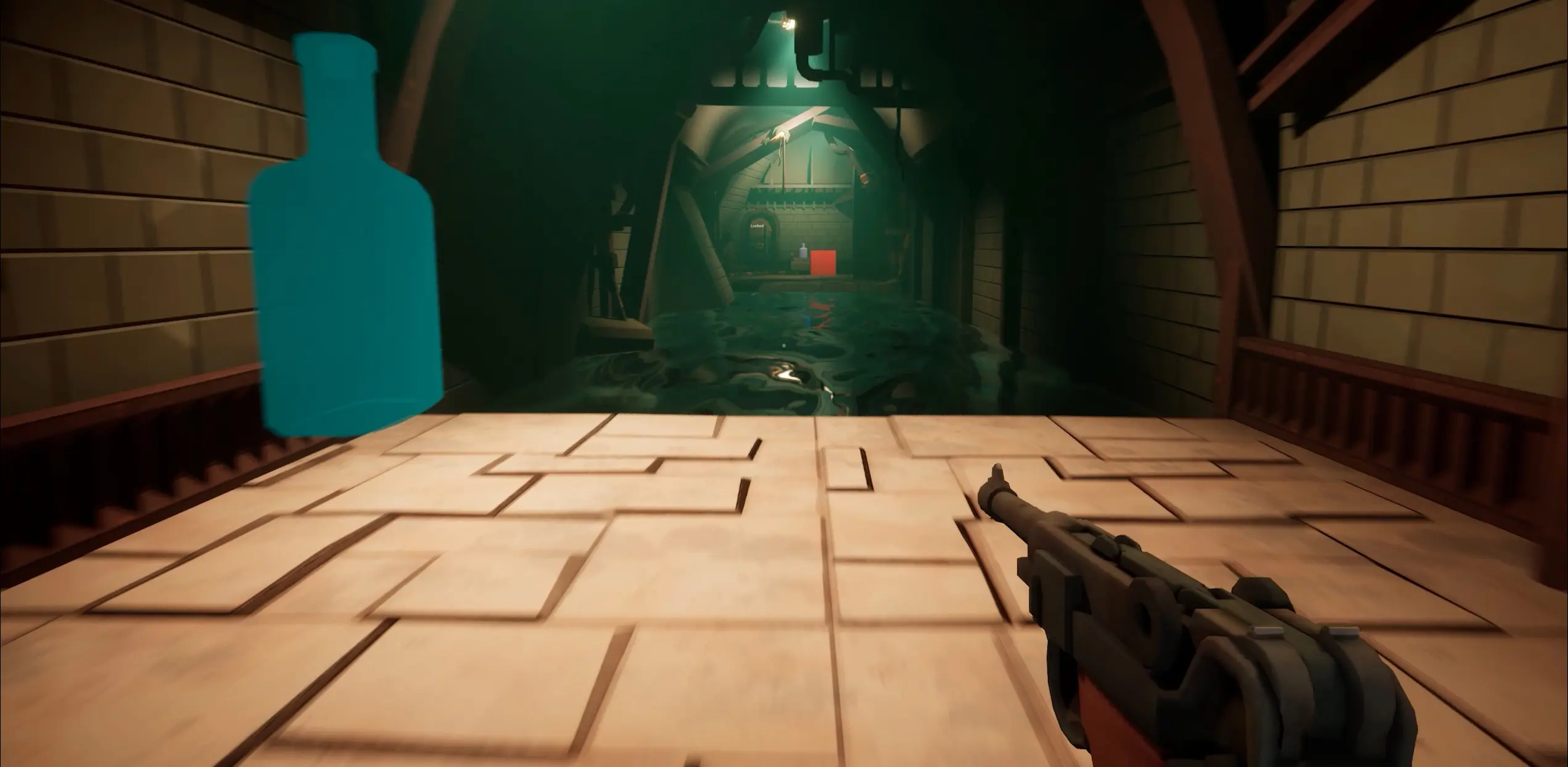Alchenemy
Alchenemy was a prototype I worked on as part of a group of 4 artists and 3 programmers over the course of couple of weeks. Our goal was to create a prototype for a horror game with immersive sim elements that forced players to make creative decisions from limited resources. We chose a diesel-punk setting that drew elements from world war II era technology.

Contents
Interactions
I worked on a few different mechanics that involved player interactions. The first of these was a generalized, component-based lock and key system that could be used to block passage or lock access to items. A couple of the circumstances in which we used this in the final prototype were to have doors that could be unlocked via levers, and transitions between levels that required players to use the eyes of defeated foes as keys.
Objects like levers and doors that can be interacted with have components that designate them as being interactable by the player. This component stores information relevant to the actor such as the interaction prompt. Although the doors can be pushed using the interaction system, the doors are also fully simulated using a constraint. This means that players can moderate how fast they open doors, reducing the noise they make which is relevant to avoiding enemy detection.
Enemies & AI
We wanted our enemies to be threatening and responsive to the player’s actions. Enemies will kill the player with a single hit while it takes multiple shots for the player to kill one foe. This, along with the unwieldy and uncomfortable gun controls, makes engaging enemies directly quite dangerous. In the event that a foe is killed, they will drop an item from a drop table defined on the enemy blueprint.
Outside of directly seeing the player, enemies are also perceptive to the sounds that players can make by walking, shooting, breaking potion bottles, and opening doors. Foes that detect a sound will investigate the sound’s location, meaning that crafty players could use the sound of a thrown potion as a diversion. I set up the AI for the enemies using a combination of perception components and behavior tree tasks. In the event that they investigate a sound and find nothing, they will then return back to their default behaviors of either wandering around their spawn location or following a patrol path if one has been set.
Refining Tone
Besides working on interaction and the enemy AI and I also made a lot of minor tweaks to some other parts of the game in order to establish a consistent tone. I added a modifier to the weapon sway to make it so that actions like moving, crouching and rapidly firing the gun would make the sway more pronounced. I also added recoil and screen shake to the gun when fired, and gave it a slight bobbing animation for when the player was walking.
I reviewed the audio on the project, adding a horror themed ambient track and integrating missing sound effects. For sounds that were effected by context like footsteps and doors, I made it so that the amplitude of the sound matched the speed of the character and the rate at which doors opened. I also made the enemies feel a bit more menacing by having them play an audio sting the moment they fully detect and start pursuing the player.
Artillery Bombardment
Given the bunker setting, I also wanted to add sporadic artillery bombing to the audio background. Initially I just had the plan to have the shells fire in varied bursts add irregular intervals, however, I got the idea to make the bombing a bit more visceral. First, I added some screen shake for when the bombs actually hit in the audio track. I then jumped into Niagara and put together an effect for falling dust despite not having much experience making VFX.
After tweaking it for a bit I was able to get the dust simulating and spreading out once it hit the ground. I didn’t have a lot of time to sort out a proper solution for deciding where the dust VFX should spawn, so I iterated through all the static mesh actors in the level and filtered for those that had meshes matching the ceiling mesh. I then selected a fixed number of these at random from which to spawn the dust systems.
Once integrated into the rest of the project, I think the bombardments succeeded in both reinforcing the claustrophobic bunker setting and providing an element of chaos that further disempowered the player.
Alchenemy had a lot of potential but due to the team having a difficult time really honing in on one single unified idea it didn’t entirely come together in the way that many of us envisioned. That being said, there are definitely elements of the project that work quite well, and could be worth carrying forward on to other games.